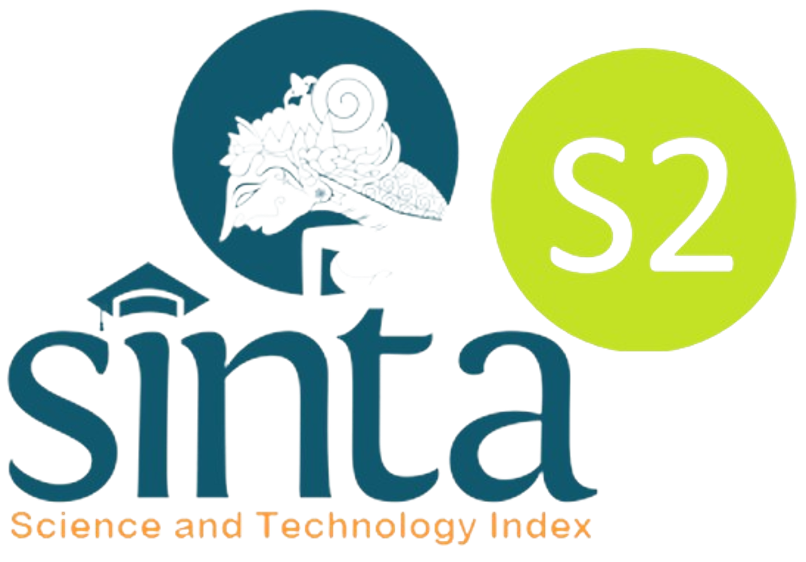Analysis of PISA Model Problems on Junior High School Mathematics Textbooks Published by Indonesia Ministry of Education in the 2017 Revised Edition
Abstract
Abstract This study aims to describe the problems of the PISA model in mathematics textbooks which are in terms of the aspects contained in the components of the PISA model. The research subjects were competency test questions in the 2017 revised edition of the 2017 curriculum 2013 math textbooks, totaling 180. This study used a descriptive method with a qualitative approach. The research instrument was an analysis guide sheet based on the aspects of content, context, and cognitive level of the PISA model questions. Data analysis uses the stages of unit purchasing analysis, categorizing, and coding. The results showed that there were 17.22 percent of the PISA model questions. The questions are distributed based on each content consisting of number, space and shape, change and relationship, and impossibility and data. In the context aspect, the questions only fulfill three contexts, personal work, and social judging from the level of cognitive questions that are applied at the level of remembering, understanding, applying, analyzing, and assessing levels.
Keywords mathematics textbook, PISA model, junior high school.
Abstrak Penelitian ini bertujuan untuk mendeskripsikan soal model PISA dalam buku teks matematika. yang ada dalam ditinjau dari aspek yang terdapat dalam komponen model PISA. Subjek penelitian adalah soal uji kompetensi dalam buku teks matematika kelas VIII kurikulum 2013 edisi revisi 2017 yang berjumlah 180. Penelitian ini menggunakan metode deskriptif dengan pendekatan kualitatif. Instrumen penelitian berupa lembar pedoman analisis berdasarkan aspek konten, konteks, dan level kognitif soal model PISA. Data dianalisis menggunakan tahapan penentuan unit analisis, pengkategorian, dan pengkodean. Hasil penelitian menunjukkan bahwa terdapat sebanyak 17,22 persen soal model PISA. Soal tersebar berdasarkan pada setiap konten terdiri dari bilangan, ruang dan bentuk, perubahan dan hubungan, dan ketidakmungkinan dan data. Pada aspek konteks soal hanya memenuhi tiga konteks yaitu konteks pribadi, pekerjaan, dan konteks sosial. Ditinjau dari level kognitif soal tersebar pada level mengingat, memahami, penerapan, analisis, dan level menilai.
Kata kunci: buku teks matematika, model PISA, SMP.
Full Text:
PDFReferences
Dewantara, A. H., Zulkardi, & Darmawijoyo. (2015). Assessing seventh graders’ mathematical literacy in solving PISA-like tasks. Journal on Mathematics Education, 6(2), 39-49.
Haji, S., Yumiati, & Zamzaili. (2018). Analisis Kesulitan Siswa dalam Menyesaikan Soal-Soal PISA ( Program for International Student Assessment ) di SMP Kota Bengkulu. [Analysis of Students' Difficulties in Completing PISA (Program for International Student Assessment) Questions at SMP Kota Bengkulu). Jurnal Pendidikan Matematika Raflesia, 3(2), 177-183.
Kolovou, A., Heuvel, M. V., Panhuizen, & Bakker, A. (2009). Non-Routine Problem Solving Tasks In Primary School Mathematics Textbooks-A Needle In A Haystack. Mediterranean Journal For Research In Mathematics Education, 8(2), 31-68
Moleong, J. Lexy. (2011). Metodologi Penelitian Kualitatif [Qualitative Research Methodology]. Bandung: Remaja Rosda karya
Munayati, Z,. Zulkardi,. & Santoso, B. (2015). Kajian Soal Buku Teks Matematika Kelas X Kurikulum 2013 Menggunakan Framework PISA [Study of Class X Mathematics Textbooks in the 2013 Curriculum Using the PISA Framework]. Jurnal Pendidikan matematika, 9(2). Diakses dari:
http://ejournal.unsri.ac.id/index.php/jpm/article/view/2161
OECD. (2015). PISA 2015 Draft Mathematics Framework. New York: Columbia University
OECD. 2019. PISA 2018. PISA 2018 Result Combined Executive Summaries. PISAOECD Publishing
Pusmendik-Kemendikbud. (2022). Asesmen kompetensi minimum. Pusat Asesmen Pendidikan Kemendikbudristek
Schleicher, A. (2018). PISA 2018 (Insights and interpretations). OECD Publishing (5), XVII, 236 p.; 26x17 cm.
Sudaryono, dkk. 2013. Pengembangan Instrumen Penelitian Pendidikan [Development of Educational Research Instruments]. Yogyakarta: Graha Ilmu.
Suharyono, Rosnawati. (2020). Analisis Buku Teks Pelajaran Matematika SMP ditinjau dari Literasi Matematika.
Susanta, A., Koto, I., & Susanto, E. (2022). Teachers' Ability in Writing Mathematical Literacy Module Based on Local Context. Education Quarterly
Susanta, A., Susanto, E., & Maizora, S. (2021, November). The Level of Junior High School Students’ Thinking in Solving TIMSS Mathematical Problems in Bengkulu. In International Conference of Mathematics and Mathematics Education (I-CMME 2021) (pp. 9-13). Atlantis Press.
Susanta, A., Sumardi, H., Susanto, E., & Retnawati, H. (2023). Mathematics literacy task on number pattern using Bengkulu context for junior high school students. Journal on Mathematics Education, 14(1), 85–102. https://doi.org/10.22342/jme.v14i1.pp85-102
Refbacks
- There are currently no refbacks.
Copyright (c) 2023 Jurnal Pendidikan MIPA

This work is licensed under a Creative Commons Attribution-ShareAlike 4.0 International License.

The copyright is reserved to The Jurnal Pendidikan MIPA that is licensed under a Creative Commons Attribution-ShareAlike 4.0 International License.

